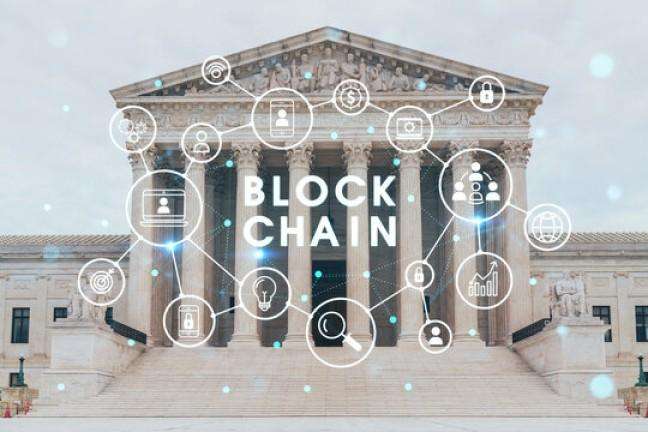Introduction
When we hear about blockchain, we often encounter grand claims. Some say it will disrupt industries, while others argue it is a technology in search of a problem. The term “50-foot blockchain” exaggerates the scale and complexity that many associate with this technology. In this article, I will break down what blockchain is, what it does well, and where its limitations lie. We will examine real-world applications, perform calculations, and use illustrations to make sense of this often-misunderstood innovation.
Table of Contents
What Is Blockchain?
Blockchain is a distributed ledger that records transactions in a secure, immutable way. Instead of a central authority managing records, blockchain distributes copies across a network of computers. When a transaction occurs, it gets verified by participants in the network through consensus mechanisms such as Proof of Work (PoW) or Proof of Stake (PoS).
Table 1: Key Characteristics of Blockchain
| Feature | Description |
|---|---|
| Decentralization | No single entity controls the ledger |
| Transparency | All participants can verify transactions |
| Security | Cryptographic hashes ensure integrity |
| Immutability | Transactions cannot be altered once recorded |
| Consensus Mechanism | Ensures agreement on the ledger’s state |
How Blockchain Works
A blockchain consists of blocks, each containing a set of transactions. Once a block reaches its capacity, it gets added to the chain. Each block references the previous one using a cryptographic hash, forming an unbreakable link.
Example: Hashing and Security
Suppose we have a block with the following transactions:
- Alice sends 1 Bitcoin to Bob.
- Bob sends 0.5 Bitcoin to Charlie.
- Charlie sends 0.2 Bitcoin to Alice.
A hashing function, such as SHA-256, converts this data into a unique string. If someone tries to alter the transaction history, the hash will change, alerting the network to tampering.
Comparing Blockchain to Traditional Databases
Many believe blockchain is superior to traditional databases. However, it is not always the right choice. Let’s compare the two.
Table 2: Blockchain vs. Traditional Database
| Feature | Blockchain | Traditional Database |
|---|---|---|
| Control | Decentralized | Centralized |
| Speed | Slower due to consensus | Faster with direct access |
| Cost | High due to computational power | Lower infrastructure costs |
| Data Integrity | Immutable | Can be altered by admins |
| Scalability | Limited | Highly scalable |
For example, Visa processes around 65,000 transactions per second (TPS), whereas Bitcoin processes 7 TPS. This shows blockchain struggles with high-volume applications.
Blockchain’s Practical Uses
Not all industries need blockchain, but some can benefit from its security and transparency.
1. Supply Chain Management
Companies like IBM and Walmart use blockchain to track products from source to shelf. This ensures authenticity and reduces fraud.
Example: Food Safety
If a contaminated batch of spinach enters the market, traditional tracking methods take weeks to trace the source. Blockchain can do this in seconds, reducing health risks and economic losses.
2. Financial Transactions
Cryptocurrencies like Bitcoin and Ethereum use blockchain to facilitate peer-to-peer transactions without intermediaries. However, transaction costs fluctuate based on network congestion.
Example: Bitcoin Transaction Fee Calculation
If the average Bitcoin block size is 1 MB, and each transaction takes 500 bytes, then a block can hold around 2,000 transactions. When demand exceeds this limit, users must pay higher fees to prioritize their transactions. This leads to variable costs, making it less predictable than traditional banking fees.
3. Smart Contracts
Ethereum introduced smart contracts, which execute automatically when predefined conditions are met. These are useful in insurance, real estate, and legal agreements.
Example: Real Estate Transactions
In traditional home sales, buyers and sellers rely on escrow services. A smart contract eliminates the need for intermediaries by automatically transferring ownership once payment is verified.
The Downsides of Blockchain
Blockchain is not a silver bullet. It has drawbacks that limit its widespread adoption.
1. Energy Consumption
Bitcoin mining consumes more electricity than entire countries. This makes PoW-based blockchains unsustainable at scale.
Table 3: Energy Consumption Comparison
| System | Energy Usage per Transaction |
|---|---|
| Bitcoin (PoW) | ~707 kWh |
| Ethereum (PoS) | ~0.0026 kWh |
| Visa | ~0.001 kWh |
2. Scalability Issues
As blockchains grow, the size of the ledger increases. Bitcoin’s blockchain is already over 500 GB. This slows down processing and increases storage requirements.
3. Regulatory Uncertainty
Governments struggle to classify cryptocurrencies and blockchain-based assets. Regulations vary across countries, creating uncertainty for businesses.
Is Blockchain Overhyped?
While blockchain has potential, it is not always the best solution. Companies must evaluate whether its benefits outweigh the trade-offs.
When to Use Blockchain
- High Trust Needs: Industries where data integrity is critical, such as finance and healthcare.
- Decentralization Required: Cases where a single point of control is a risk.
- Immutable Records Needed: Environments that require tamper-proof data.
When Not to Use Blockchain
- High-Speed Transactions: Applications needing thousands of transactions per second.
- Low Energy Footprint Required: Systems where efficiency is a priority.
- Simple Data Storage: Traditional databases work better for most applications.
Conclusion
The idea of a “50-foot blockchain” represents both the excitement and the misconceptions about this technology. Blockchain is not magic. It is a tool with specific use cases. Some industries benefit, while others find it unnecessary. By understanding blockchain’s strengths and weaknesses, we can make informed decisions about its role in our digital future.





